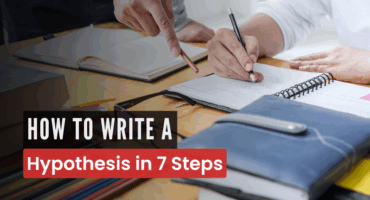Economics for Business Tutorial Questions
Question 1: Debra
A: Absolute Advantage
Absolute advantage is when the producer can produce the products/services in greater quantity at same cost/hours or at low cost/hours as compared to the other producers.
Absolute advantage in producing cakes is of Debra as she can produce more cakes i.e. 12 in 4 hours as compared to Sam who can produce 6 cakes in 4 hours.
Absolute advantage in producing cookies is also of Debra as she can produce 16 cookies in 4 hours as compared to 12 cookies by Sam in 4 hours.
B: Opportunity Costs of Debra & Sam
|
|
Cake
|
Cookie
|
|
Debra
|
Total Cookies/Total Cakes
= 16/12 = 1.33 cookies
|
Total Cakes/Total Cookies
= 12/16 = 0.75 cakes
|
|
Sam
|
Total Cookies/Total Cakes
= 12/6 = 2 cookies
|
Total Cakes/Total Cookies
= 6/12 = 0.5 cakes
|
C: Comparative Advantage
The comparative advantage is achieved when a person can produce something at lower cost than the other person. Given the above table of opportunity cost, Debra has lower opportunity cost in producing cakes than Sam, so she can produce only cakes on the other hand, Sam has lower opportunity cost in producing cookies than Debra, so she can produce only cookies.
In this case, Debra will be producing 12 cakes and Sam will be producing 12 cookies.
Question 2: Ice-Cream Market
A: Market Equilibrium in Ice-Cream Market
B: Change in Market EquilibriumIn the figure above, the demand for ice-cream is shown by downward sloping curve D, while the supply for ice-cream is shown by upward sloping curve S. The market is at equilibrium with price Pe and quantity at Qe where both supply and demand for ice-creams are equal at “E”.
If the weather becomes hotter, the demand for the ice-creams will increase causing an outward shift in the demand curve from D to D1 (see in the figure above). This will push the prices up from Pe to P1 along with the increase in quantity bought & sold in market from Qe to Q1. The new equilibrium will be achieved at the point where D1 intersects S at E1 at higher price and quantity.
Question 3: ABC Company
A: Cost
TFC = $5,000
TVC = $15,000/day
Q = 100 pendants/day
So,
AFC = TFC/Q = 5,000/100 = $50
AVC = TVC/Q = 15,000/100 = $150/day
ATC = TFC + TVC = 50 + 150 = $200
Total Cost = FC + VC = 5,000 + 15,000 = $20,000
B: Economic Profit & Accounting Profit
The implicit costs are the opportunity costs (forgone rent, forgone interest & forgone salary) while the explicit costs are wages, salary, interest paid, raw material and other payments
Economic Profit = Total Revenues – Explicit Cost – Implicit Cost
Economic Profit = $500,000 – (400,000 + 10,000 + 50,000 + 20,000) – (8,000 + 10,000 + 7,000)
Economic Profit/(Loss) = $500,000 – 480,000 – 97,000 = ($77,000)
Accounting Profit = Total Revenue – Explicit Cost
Accounting Profit = $500,000 - $480,000 = $20,000
Question 4: Charles
A: Second-hand textbooks aren’t part of GDP calculation as the book in question was manufactured in other year and not in the current year, so it is not counted in GDP calculation for current year.
B: Again, the underlying good is second-hand and isn’t produced in same year. Any transaction pertaining to it will have no impact on current year GDP so it will remain unaffected in current year.
C: Spending on new houses is regarded as an investment. Hence, it will be included in current GDP calculation. Investment will be added to GDP equation and thus it will increase the GDP.
D: Any item produced in a given year within the economy is included in GDP calculation. Meat produced and exported to Indonesia is counted in domestic production and will be used in GDP calculation. Goods sold abroad are named as exports and are added to GDP. Hence, exports of meat will increase GDP in current year.
E: The fish bough by shop will be used in producing final good i.e. meal served at diner. The fish isn’t itself a final meal, yet it is added to the final consumption of goods by consumers. Hence, this will also increase GDP value in current year.
F: Buying new deep fryer for making final good (fries) will constitute as the investment in equipment. Hence, as investments are added to GDP equation, so new purchases will increase the GDP in current year.
Question 5: ABS
The labor force participation rate is calculated as the number of people in labor force divided by the working age people. Hence the participation rate in Australia is:
LFPR = 10,979,300/1,680,200 = 0.653 or 65.3%
The unemployment rate is calculated as the number of people unemployed divided by the number of people in labor force. It consists of the employed and unemployed people. Hence, the total number of unemployed people in Australia as per question was;
Number of unemployed persons = Labor Force – employed = 10,979,300 – 10,514,600 = 464,700
So unemployment rate is 464,700/10,979,300 = 0.042 or 4.2% in Australia as per the given data in question.
Question 6: Australian Economy
A: Slowdown in China’s Economic Growth
As Australia is a net exporter to China, the slowdown in the Chinese economic growth will put the downward pressure on demand for Australian goods. This will reduce the exports to China while reducing aggregate demand of Australian goods. This will shift demand curve from AD to AD1 with reduction in prices from P to P1 and output from Q to Q1.
B: Wage Rate Up
The rise in the wages will increase the net cost of production for the producers. This will push the suppliers in producing and supplying less goods that will shift supply curve to left from ASC to ASC1 while raising the price level from P to P1 and reducing output from Q to Q1.
C: Consumer Confidence Increase
The increase in the consumer confidence will increase the demand curve and put it to shift to right from AD to AD1 while causing the increase in both prices and output level (from P to P1 and from Q to Q1) due to optimism in the market










